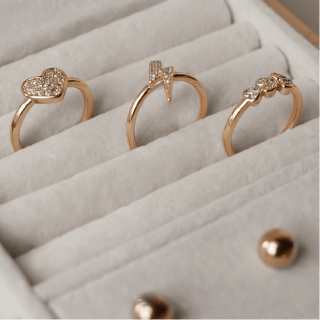Unlocking Ancient Egyptian Secrets Through Color and Art
Ancient Egyptian civilization is renowned for its rich artistic heritage, where every color, symbol, and motif was imbued with profound spiritual and cultural significance. Art served not only as a form of aesthetic expression but also as a vital communication tool, preserving beliefs, societal structures, and cosmological understandings across millennia. By exploring the use of colors and symbols in Egyptian art, we gain invaluable insights into their worldview, religious practices, and social hierarchy.
Table of Contents
- Introduction to Ancient Egyptian Art and Symbolism
- Understanding the Educational Power of Colors in Ancient Egypt
- The Intersection of Art, Religion, and Cosmology in Ancient Egypt
- Deep Dive into Iconography: The Ankh and Other Symbols
- The “Eye of Horus”: A Modern Illustration of Ancient Concepts
- Material Preservation and Knowledge Transmission through Art
- Connecting Ancient Egyptian Cosmic Beliefs with Modern Understanding
- Non-Obvious Insights: Hidden Layers in Egyptian Art and Color
- Conclusion: Unveiling the Secrets of Ancient Egypt through Art and Color
1. Introduction to Ancient Egyptian Art and Symbolism
a. The role of art in ancient Egyptian culture
Ancient Egyptian art was a foundational element of their cultural identity, serving both functional and spiritual purposes. Artworks decorated tombs, temples, and everyday objects, aiming to ensure harmony between the mortal world and the divine. These creations acted as conduits for religious rituals, commemorations, and social status displays, emphasizing the interconnectedness of life, death, and the divine realm.
b. How color and symbols conveyed meaning and beliefs
Colors and symbols in Egyptian art were carefully chosen to embody specific spiritual and societal messages. For example, the color green symbolized fertility and rebirth, while red represented chaos or protection. Symbols like the Ankh or the Eye of Horus conveyed complex ideas about life, protection, and divine authority, acting as visual language accessible to all members of society.
c. The significance of visual storytelling in preserving history
Through hieroglyphs, murals, and sculptures, Egyptians crafted visual narratives that transcended time. These stories encoded religious doctrines, historical events, and social hierarchies, ensuring their transmission across generations. This visual storytelling remains a primary source for modern scholars decoding ancient Egyptian civilization.
2. Understanding the Educational Power of Colors in Ancient Egypt
a. Symbolic meanings of primary colors used in Egyptian art
Egyptians employed a palette of vibrant colors, each carrying specific symbolic weight. Gold and yellow represented the eternal and divine, associated with the sun god Ra. Blue symbolized the Nile, fertility, and rebirth, often linked to the sky and water deities. Red conveyed vitality, chaos, or protection, while green signified growth and renewal. Understanding these color meanings was essential for interpreting Egyptian artworks accurately.
b. The science behind the durability of Egyptian pigments and materials
Egyptian artisans developed durable pigments by mineralizing natural resources. For example, lapis lazuli and malachite provided vibrant blues and greens, respectively, that have persisted for thousands of years. Their expertise in preparing these materials, along with techniques like firing and glazing, ensured the longevity of colors in tombs and artifacts, allowing modern viewers to study their symbolism with clarity.
c. How color choices reflected social status, religious beliefs, and cosmic concepts
Colors were not used arbitrarily; they indicated social hierarchy and spiritual significance. Nobles and pharaohs often wore garments with the richest hues, such as deep blue or gold, symbolizing divine authority. Religious texts and temple murals employed specific color schemes to depict cosmic order, aligning earthly authority with divine principles.
3. The Intersection of Art, Religion, and Cosmology in Ancient Egypt
a. Key deities and their associated symbols and colors
Deities in Egyptian mythology were represented through specific symbols and colors. Osiris was often depicted with green skin, symbolizing rebirth, while Horus was associated with the Eye of Horus, symbolizing protection. Isis was frequently shown with a throne-shaped crown, her colors ranging from blue to gold, emphasizing divine authority and fertility.
b. The role of art in religious rituals and afterlife beliefs
Artworks and artifacts were integral to rituals and the journey into the afterlife. Wall paintings in tombs depicted the cosmic order, gods, and protective symbols, guiding souls through the underworld. The colors used in these murals reinforced themes of rebirth, divine protection, and eternal life.
c. The story of Ra’s journey across the sky as a cosmic cycle
Ra, the sun god,’s daily journey across the sky symbolized the eternal cycle of life, death, and rebirth. Artworks depicting Ra’s chariot and solar barque used golden and blue hues to represent divine radiance and the celestial realm. This cosmic cycle was central to Egyptian understanding of the universe, influencing temple architecture and ritual practices.
4. Deep Dive into Iconography: The Ankh and Other Symbols
a. The ankh’s dual symbolism of life and fertility
The Ankh is perhaps the most recognizable symbol from Egypt, representing life, immortality, and fertility. Its loop symbolizes eternal life, while the crossbar signifies stability. The ankh was often depicted being held by gods or pharaohs, emphasizing their divine authority and connection to eternal life.
b. The integration of symbols like the ankh in artworks and artifacts
Ancient artisans incorporated the ankh into jewelry, amulets, and temple carvings, embedding spiritual messages into everyday objects. Its recurring presence in funerary art underscores its role as a conduit for spiritual protection and eternal life, bridging material culture and spiritual beliefs.
c. How symbols embody complex spiritual and philosophical ideas
Symbols like the ankh and the scarab encapsulate layered spiritual philosophies—immortality, rebirth, and divine order. Their visual simplicity masks profound conceptual depths, making them powerful tools for transmitting complex ideas across generations.
5. The “Eye of Horus”: A Modern Illustration of Ancient Concepts
a. The myth of Horus and the significance of the eye as protection and healing
According to myth, Horus lost his left eye in a battle with Set, but it was restored by Thoth, symbolizing healing and protection. The Eye of Horus became a talisman believed to ward off evil, promote health, and ensure safety—principles that resonate even today.
b. How the Eye of Horus exemplifies the blending of art and spiritual symbolism
This symbol’s distinctive design, with its stylized eye and markings, exemplifies how Egyptian art combined aesthetic beauty with layered spiritual meaning. It served as an amulet, a ritual object, and an icon embedded in temples and tombs, illustrating the synergy of visual art and spiritual doctrine. For those interested in exploring symbolic art further, learning about the enduring significance of such motifs can be enriched by engaging with modern interpretations, like the best RTG slots with expanding wilds, which echo themes of protection and luck.
c. Contemporary uses and interpretations of the Eye of Horus in jewelry and art
Today, the Eye of Horus remains a popular symbol in jewelry, fashion, and art, representing protection, health, and spiritual insight. Its adaptation in modern contexts underscores the timeless relevance of Egyptian symbols, bridging ancient wisdom with contemporary expression.
6. Material Preservation and Knowledge Transmission through Art
a. The longevity of papyrus and its role in ancient educational texts
Papyrus scrolls, developed from the papyrus plant, were the primary medium for recording religious texts, scientific knowledge, and administrative records. Their durability allowed for the transmission of complex ideas over centuries, forming the backbone of Egyptian education and record-keeping.
b. Techniques used by ancient artisans to preserve colors and symbols over millennia
Egyptian artisans employed meticulous techniques such as mineral-based pigments, chemical treatments, and specific application methods to ensure color longevity. The use of natural minerals like lapis lazuli and malachite, combined with sealing techniques, contributed to the vibrant, enduring appearance of their artworks.
c. The importance of material durability in unlocking historical secrets
Preserved artifacts provide critical insights into Egyptian civilization, revealing details about their religious beliefs, social hierarchy, and cosmology. The durability of materials like stone, paint, and papyrus ensures that these secrets remain accessible to researchers and enthusiasts today.
7. Connecting Ancient Egyptian Cosmic Beliefs with Modern Understanding
a. How the depiction of celestial cycles like Ra’s path informs our knowledge of Egyptian cosmology
Egyptian art vividly depicted celestial cycles, with Ra’s journey across the sky symbolizing the eternal renewal of life. These representations informed their understanding of time, seasons, and the divine order, influencing architecture such as temples aligned with celestial events.
b. The influence of these beliefs on Egyptian art and architecture
Cosmological concepts shaped the design of pyramids, temples, and tombs, which aimed to mirror celestial phenomena and facilitate divine communication. Alignments with stars and solstices reflect their desire to harmonize earthly structures with cosmic forces.
c. Lessons from ancient symbolism applicable to modern spiritual and artistic pursuits
Contemporary artists and spiritual practitioners often draw inspiration from Egyptian symbols, recognizing their deep connection to universal themes of life, death, and rebirth. Exploring these ancient motifs can enrich modern creative and spiritual practices, fostering a dialogue between past and present.
8. Non-Obvious Insights: Hidden Layers in Egyptian Art and Color
a. Subtle color variations and their possible symbolic implications
Even within a single artifact, minor variations in hue and saturation can indicate different spiritual states or social statuses. For example, a slightly darker shade of green might symbolize a more profound connection to fertility or the underworld.
b. The use of spatial composition to convey layered meanings
Egyptian artists skillfully arranged figures and symbols to create hierarchies and relationships, conveying complex narratives within limited






